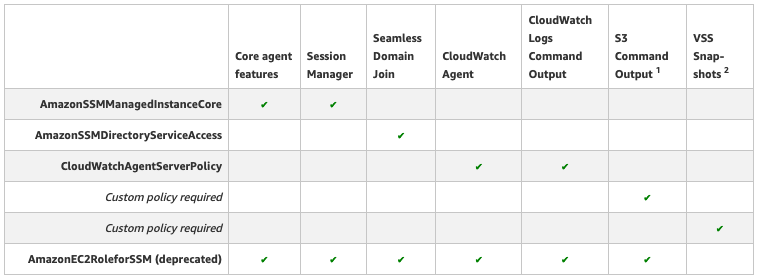AWS Cloud Operations Blog
Category: AWS Identity and Access Management (IAM)
Automate suspension of an AWS CodePipeline release during critical events using AWS Systems Manager Change Calendar and Amazon EventBridge
In this blog post, I show you how to set up public holidays calendars using AWS Systems Manager Change Calendar and suspend your AWS CodePipeline pipelines during the critical holidays in these calendar events. For example, let’s say an application release pipeline in your AWS account builds and deploys a new version of the application […]
Continuous permissions rightsizing to ensure least privileges in AWS using CloudKnox and AWS Config
This blog post was contributed by Kanishk Mahajan, AWS and Maya Neelakandhan, CloudKnox As you migrate your workloads to the cloud or operate your existing workloads in the cloud it would be ideal if every application was deployed with the exact permissions that it required. In practice, however, the effort required to determine the precise […]
Four ways to retrieve any AWS service property using AWS CloudFormation (Part 3 of 3)
This post is the last in a series on how to build customizations using AWS CloudFormation. In part 1, we introduced you to cfn-response and crhelper and discussed the scenarios they are best suited for. In part 2, we addressed a coverage gap in our public roadmap and showed you how to build an AWS […]
Four ways to retrieve any AWS service property using AWS CloudFormation (Part 2 of 3)
This post is the second in a series on how to build customizations using AWS CloudFormation. In part 1, we showed you how to develop customizations using cfn-response and crhelper and shared the scenarios they are best suited for. In this post, we’ll use AWS CloudFormation macros to address some of the coverage gaps identified […]
How to implement a read-only service control policy (SCP) for accounts in AWS Organizations
Customers who manage multiple AWS accounts in AWS Organizations can use service control policies (SCPs) to centrally manage permissions in their environment. SCPs can be applied to an organization unit (OU), account, or entire organization to restrict the maximum permissions that can be applied in the scoped AWS accounts. In this post, we are going to explore the use of SCPs to restrict an AWS account to read-only access.
Open sesame: Granting privileged access to EC2 instances with Session Manager
In this guest blog post, Herman Lee (Cloud Solution Architect, VP) and Nauman Noor (Managing Director) from the public cloud engineering team at State Street discuss their use of AWS Systems Manager Session Manager for privileged access management of Amazon EC2 instances. State Street Corporation is a financial services company responsible for the management, custody, […]
How BBVA USA delivered security and governance at scale using management tools
As BBVA USA began its digital transformation journey, the security operations team had to improve its processes around provisioning and baselining of AWS accounts. The demand for new AWS accounts continued to increase from multiple application teams within the bank. In an effort to standardize new accounts within the enterprise, BBVA USA built an automated […]
Creating a secure DevOps pipeline for AWS Service Catalog
Many AWS customers I speak with want to manage their AWS services using infrastructure as code (IaC) and DevOps practices for managing, versioning, and deploying products and portfolios. A best practice is deploying infrastructure templates from a continuous delivery (CD) pipeline with validation. In so doing, you can provide the AWS services your users need […]
Configure Session Manager access for federated users using SAML session tags
In this blog post, we show you how to configure Attribute-Based Access Control (ABAC) permissions to federate users into AWS Systems Manager Session Manager. We demonstrate how you can use attributes defined in external identity systems as part of the ABAC decisions within AWS, with SAML session tags. For example, you can grant access to […]
Applying managed instance policy best practices
Since AWS Systems Manager was launched, the service has continued to add new features for customers to use. Many features are enabled by granting your Amazon EC2 instances and on-premises servers access to Systems Manager using an AWS Identity and Access Management (IAM) role with the necessary permissions. To provide customers more flexible, fine-grained permission […]







